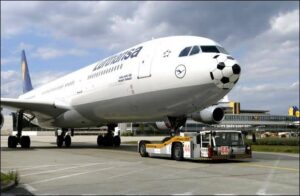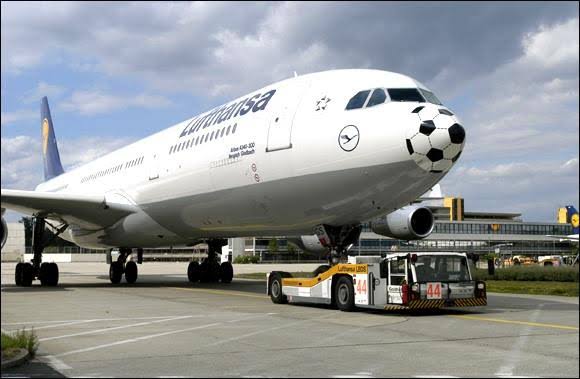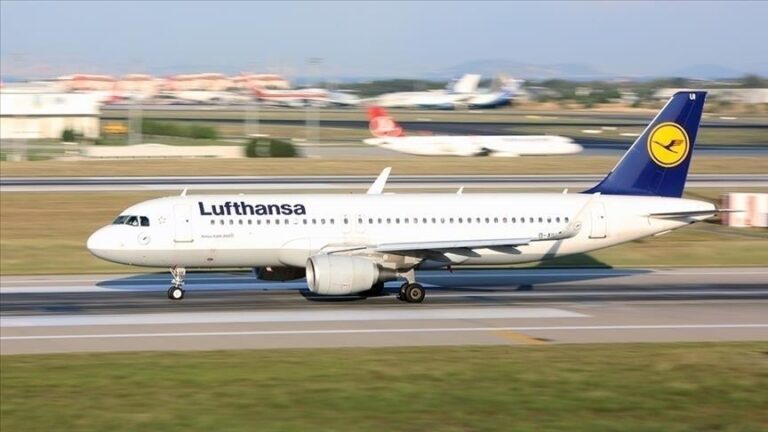11 Injured After Severe Turbulence Onboard Lufthansa Flight To Frankfurt
Frankfurt”Unfortunately, five passengers and six crew members suffered mostly minor injuries,” a Lufthansa spokesperson told Reuters in an email, confirming a report by the DPA news agency.Berlin:
11 Injured After Severe Turbulence Onboard Lufthansa Flight to Frankfurt
Frankfurt, Germany – On November 11, 2024, a Lufthansa flight traveling from Buenos Aires, Argentina to Frankfurt, Germany experienced a sudden and intense episode of turbulence that resulted in injuries to eleven individuals. Among the injured were five passengers and six crew members. The incident took place while the aircraft was flying over the Atlantic Ocean, within a known zone of meteorological instability, and has reignited discussions on air safety and turbulence preparedness.
The Lufthansa Boeing 747-8 aircraft, carrying 329 passengers and 19 crew members, landed safely at Frankfurt Airport at 10:53 AM local time on November 12. Medical teams were on standby at the airport to provide immediate assistance to those injured during the flight. While no life-threatening injuries were reported, the sudden nature of the turbulence caused considerable distress and raised concerns among passengers and their families.
What Happened Aboard the Flight?
According to Lufthansa and multiple eyewitness reports, the aircraft encountered severe turbulence as it passed through the Intertropical Convergence Zone (ITCZ), an area near the equator where the northeast and southeast trade winds converge. This region is notorious among aviators for its unpredictable and often violent weather patterns. Despite modern weather tracking systems and advanced flight planning protocols, turbulence in this area can occur with little or no warning.
The turbulence was described by passengers as sudden and violent. One passenger reported that the plane “dropped like an elevator” for a few seconds. “There were gasps, a few screams. Some people were thrown against their seat belts, and a flight attendant fell against the cabin wall,” said Marta Reyes, a 52-year-old business traveler from Chile.
The seatbelt sign had been turned on shortly before the incident, but some passengers and crew members were moving about the cabin when the turbulence hit. The six injured crew members were reportedly in the process of serving meals or assisting passengers.
Lufthansa’s Response
Lufthansa issued a formal statement shortly after the flight landed, confirming that eleven individuals had sustained injuries. The airline expressed its regret for the incident and emphasized that the safety of passengers and crew remains its top priority. The airline’s Special Assistance Team was mobilized at Frankfurt Airport to provide support, medical evaluation, and transportation for the injured.
“We regret the injuries sustained by some of our passengers and crew members. All necessary assistance was provided immediately upon arrival, and we are working closely with medical authorities to ensure everyone receives appropriate care,” said a spokesperson for Lufthansa.
Lufthansa also reiterated its recommendation that passengers keep their seat belts fastened while seated, even when the seatbelt sign is off. The airline noted that while turbulence is often unpredictable, safety protocols are in place to minimize the risks.
Understanding Turbulence
Turbulence is a common occurrence in aviation, caused by irregular motion in the air due to a variety of atmospheric conditions. These include jet streams, thunderstorms, mountain waves, and areas like the ITCZ, where rapid changes in temperature and humidity can lead to unstable air masses.
There are several types of turbulence, ranging from light to extreme. In this particular case, the aircraft encountered what meteorologists would categorize as “severe turbulence,” which can cause sudden changes in altitude or attitude, strong jolts, and difficulty controlling the aircraft. Severe turbulence can injure passengers and crew who are not securely strapped in and can lead to the displacement of unsecured items in the cabin.
Although turbulence rarely poses a threat to the structural integrity of modern commercial aircraft, it remains one of the leading causes of in-flight injuries. According to data from the U.S. National Transportation Safety Board (NTSB), turbulence accounted for more than one-third of all airline accidents in the United States from 2009 to 2018 in which injuries occurred.
The Role of Weather and Technology
Airlines today use a variety of tools to predict and avoid turbulence, including satellite data, radar systems, and pilot reports from earlier flights. Flight crews receive frequent weather updates and may adjust altitudes or routes to avoid turbulent areas.
However, even the most advanced systems have limitations. Clear air turbulence (CAT), which often occurs in the absence of visual indicators such as clouds or storms, can strike without warning. The Intertropical Convergence Zone is particularly notorious for sudden convective weather events that are difficult to detect until they are very close.
In this case, Lufthansa’s pilots followed standard protocol and had the seatbelt sign activated prior to the onset of turbulence. Unfortunately, not all passengers and crew members were seated at the time.
Passenger Reactions and Experiences
Many passengers described the flight as one of the most terrifying experiences of their lives. Videos and photos taken on board showed dislodged service carts, scattered food, and several items strewn across the aisles.
“I’ve been flying for years, and I’ve never experienced anything like this,” said Simon Beck, a passenger from Germany. “It was like the plane just dropped from the sky. Everything went flying — trays, cups, even people. It was chaos for a few seconds.”
Other passengers praised the crew’s professionalism in handling the situation and providing calm, clear instructions afterward. “They were heroes,” said another passenger. “Even some of the injured flight attendants kept working to make sure we were okay.”
Comparison to Similar Incidents
This is not the first time a commercial airline has experienced injuries due to turbulence. In May 2024, a Singapore Airlines flight en route from London to Singapore encountered turbulence over Myanmar, resulting in one fatality and over thirty injuries. In July 2024, over forty passengers aboard an Air Europa flight were injured due to strong turbulence that prompted an emergency landing in Brazil.
While these events are relatively rare considering the millions of flights that take off each year, they highlight the importance of continuous investment in aviation safety and passenger awareness.
Safety Measures Going Forward
Experts recommend that passengers always wear their seat belts when seated, regardless of whether the seatbelt sign is illuminated. Flight attendants routinely remind travelers of this rule, but it is not always heeded.
Aircraft manufacturers are also exploring enhanced warning systems and cabin design modifications to reduce injuries. This includes more secure storage compartments, advanced seatbelt technology, and improved turbulence detection systems.
Meanwhile, aviation authorities around the world continue to collect and analyze turbulence-related data to improve forecasting models and ensure safer skies for all travelers.
Final Thoughts
The Lufthansa turbulence incident serves as a sobering reminder of the unpredictability of nature, even in an era of modern aviation. While aircraft remain one of the safest modes of transportation, incidents like this highlight the need for vigilance, preparation, and adherence to safety procedures.
Thankfully, the quick actions of the flight crew and the emergency response teams ensured that injuries were minimized and all passengers arrived safely. Lufthansa has committed to a full investigation of the incident in coordination with aviation authorities and remains focused on maintaining the highest standards of safety and service.
For passengers, the message is clear: buckle up, stay alert, and trust the protocols in place. Turbulence may be unavoidable, but injuries from it don’t have to be.
—

Eleven people were injured when a Lufthansa flight from Buenos Aires to Frankfurt hit severe turbulence while travelling over the Atlantic, the airline said on Tuesday.
“Unfortunately, five passengers and six crew members suffered mostly minor injuries,” a Lufthansa spokesperson told Reuters in an email, confirming a report by the DPA news agency.
“The safety of the flight was not in jeopardy at any time,” the spokesperson added.
The injured received medical treatment immediately after the aircraft landed safely at its planned destination on Tuesday at 10:53 am (0953 GMT), according to the airline.The Boeing 747-8 had been carrying 329 passengers and 19 crew members. The turbulence was brief and occurred in an intertropical convergence zone, the company said.
In May, a passenger died of a suspected heart attack and 30 were injured when a Singapore Airlines passenger plane was severely jolted by an air pocket over the Irrawaddy Basin in Myanmar.






